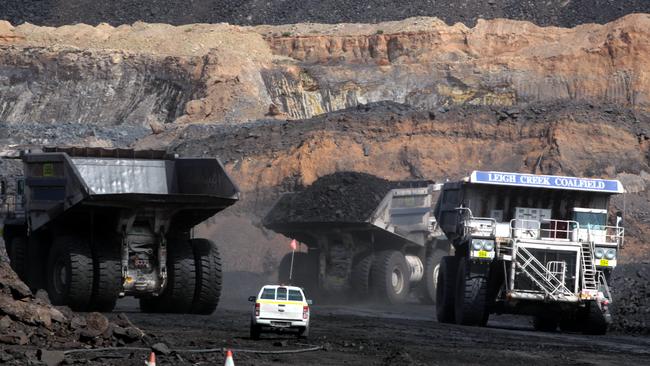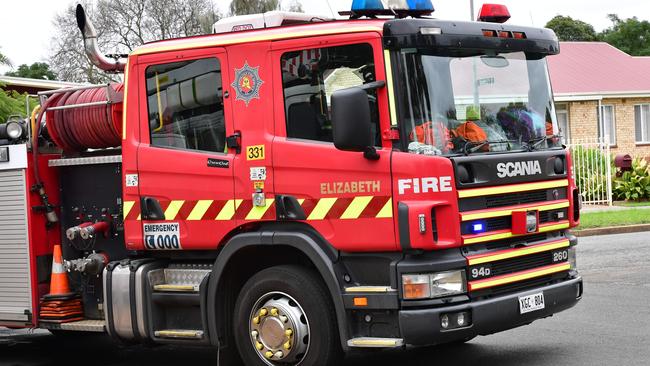Port Augusta power stations and Leigh Creek coal mine expected to close by 2018, costing about 440 jobs
UPDATE: The State Government will provide at least $1 million in support for communities hit by the closure of Port Augusta’s two power stations and the Leigh Creek coal mine.
SA News
Don't miss out on the headlines from SA News. Followed categories will be added to My News.
- SA’s jobless rate hits 14-year high
- Alinta’s Port Augusta solar thermal vision not viable
- Santos cuts another 200 jobs from SA in ongoing cost-cutting drive
- Whyalla business owners and locals say Arrium job losses will hurt
THE State Government will provide at least $1 million in support for communities hit by the closure of Port Augusta’s two power stations and the Leigh Creek coal mine.
Alinta Energy has confirmed the closure, exclusively revealed by The Advertiser, which will happen by 2018 — costing about 440 jobs.
Decreasing baseload electricity demand and the rise of renewable energy sources are being blamed for the decision to accelerate a closure previously slated for 2030.
Manufacturing Minister Kyam Maher said an initial $1 million would go to a community engagement team to provide support and advice to the region’s communities.
Team members will be in Port August and Leigh Creek from tomorrow.
“We will also talk to the Federal Government about the level of support it can provide to help the Upper Spencer Gulf region,” Mr Maher said.
“Our advice is that Alinta’s decision won’t impact South Australia’s electricity supply. The National Electricity Market currently holds more capacity than is needed to supply consumer demand.”
The Government has also set up a 1800 number for people needing help — 1800 294 446.
Premier Jay Weatherill said the state’s economy was in transition, with some industries in decline and others growing.
“It’s a challenge. We have to double down on the growing industries - that’s why we need to take bold steps,” he said.
Mr Weatherill said the state had a strong and vibrant future, because growing industries would provide long-term jobs.
But Opposition Leader Steven Marshall said the unemployment rate, coupled with news of Port Augusta power stations’ and Leigh Creek mine’s closure, showed SA was in the midst of an escalating jobs crisis.
“It is time for the State Government to shift their focus from blaming the Federal Government for South Australia’s woes and start working on a plan to transform our economy and deliver jobs,” he said.
“Last month, 8,700 full-time jobs were lost – that’s 280 people losing their jobs every day. The loss of 8,700 full-time jobs in May is the equivalent of four Holden plants closing.
“South Australia needs to be transformed into a state where people invest and new jobs are created.”
Alinta, which has owned the operations since 2007, told staff of the decision at meetings this morning in Port Augusta and Leigh Creek.
They were told the closure will occur by 2018, or even earlier, but not before March next year.
The Leigh Creek mine, an associated 250km railway to Port Augusta and the ageing Northern and Playford power stations provide jobs for 455 people.
The two power stations generate a combined 780 megawatts, about 15 per cent of the state’s baseload electricity, and historically have provided up to 35 per cent of South Australia’s power.
Port Augusta will be hit hard by the power stations’ closure, because Alinta employs 190 people there and a further 40 jobs are associated with the plants.
Shutting down the Northern Power Station would leave an economic hole of $132 million, according to previous estimates.
Alinta Energy chief executive officer Jeff Dimery said the company was working closely with the State Government, unions, local businesses and the Port Augusta and Leigh Creek communities to prepare for the closure.
“There are approximately 440 employees that will be affected by this difficult decision. Their welfare and that of their families is our highest priority at this time,” Mr Dimery said.
“All affected employees will receive their full entitlements and the company will provide additional support services to assist during this transition. It is anticipated that a total in the vicinity of $75 million in redundancy benefits and entitlements will be distributed to employees across the Flinders business.”
He said the decision followed a detailed strategic review during the past four and a half years that investigated a range of options to find a viable economic future for the operations.
“During this period the company has incurred operating losses in the vicinity of $100 million whilst at the same time investing an additional $200 million to extend the operating life of the Flinders business,” Mr Dimery said.

“The decline in demand for energy, as households have become more efficient and the number of industrial customers has declined, combined with policy settings designed to support significant growth in renewable energy generation, have together had the effect of causing a significant oversupply of power available to South Australia.”
The closure is a fresh blow to the state’s economy, following the announcement of Holden’s Elizabeth plant’s closure in 2017 and uncertainty over Defence shipbuilding.
Repower Port Augusta Alliance spokesman Dan Spencer this morning urged immediate action by the State Government to invest in building a solar thermal plant in Port Augusta.
“Alinta has taken the community by surprise with this announcement and our thoughts are with the workers and their families on this difficult day,” he said.
“Alinta had the opportunity to work towards a clean energy transition in Port Augusta, but instead it looks like they’re going to cut and run, so we need the State Government to step up”
Leigh Creek’s closure will end more than 70 years of commercial coal mining, which started in 1943 when then premier Tom Playford wanted to develop a self-sufficient energy supply because of World War II coal shortages.
The mine supplies coal exclusively for the Port Augusta power stations, about 250km to the south.
Alinta in April abandoned plans for a 50-megawatt solar thermal plant at Port Augusta, costing almost $800 million, to replace the Northern and Playford stations, which were commissioned in 1985 and 1954 respectively.
Even under the most optimistic forecasts, the company still fell $150 million short of the capital required to finance the solar project.
The 544MW Northern plant was scheduled to close in 2030. The 240MW Playford station, which was refitted in 2005, typically operates only during summer when electricity demand is greatest.
Australian Energy Regulator figures show national electricity market consumption has fallen to 193.6 terawatt hours in 2013-14 since a peak of 210.5 TW hours in 2008-09.
The head of the nation’s largest utility group, Origin Energy, told that company’s investors yesterday the market was now oversupplied, and that falling demand, lower poles and wires charges, the end of the carbon tax and supply increases to meet the 2020 renewable energy target were contributing to the situation
The Port Augusta plants are connected to the national grid via ElectraNet’s network, including 275kV transmission lines through the Mid North to Adelaide.
Alinta previously had hoped to prolong the power stations’ life by using blended coal from a rejuvenated Leigh Creek mine. Earlier estimates had predicted the mine would run out of coal by 2017.
But in late 2013, Alinta said it was testing a new low-quality coal deposit which, when blended with present supplies, could supply Northern Power Station through to 2030.
International renewable energy investors, including US firm SolarReserve and Spain’s Abengoa, have been studying the potential for a solar thermal plant at Port Augusta in the expectation of the power stations closing in 2030.
SolarReserve’s Australian development director Daniel Thompson last month told The Advertiser that Port Augusta was a “unique opportunity” because it was in a location with an exceptional solar resource.
The Northern and Playford power stations were operated by the former Electricity Trust of South Australia (ETSA) until its privatisation in 1999. Their former owner, Babcock & Brown Power, was acquired by Alinta in 2007.
Leigh Creek and the Port Augusta power stations were under threat in mid-2011, as Australia grappled with a carbon tax, because the Playford B station was said to be one of the nation’s dirtiest.
An explosion at the power station on Sunday resulted in a 24-year-old man being flown to Adelaide for treatment to burns to his hands and face.




